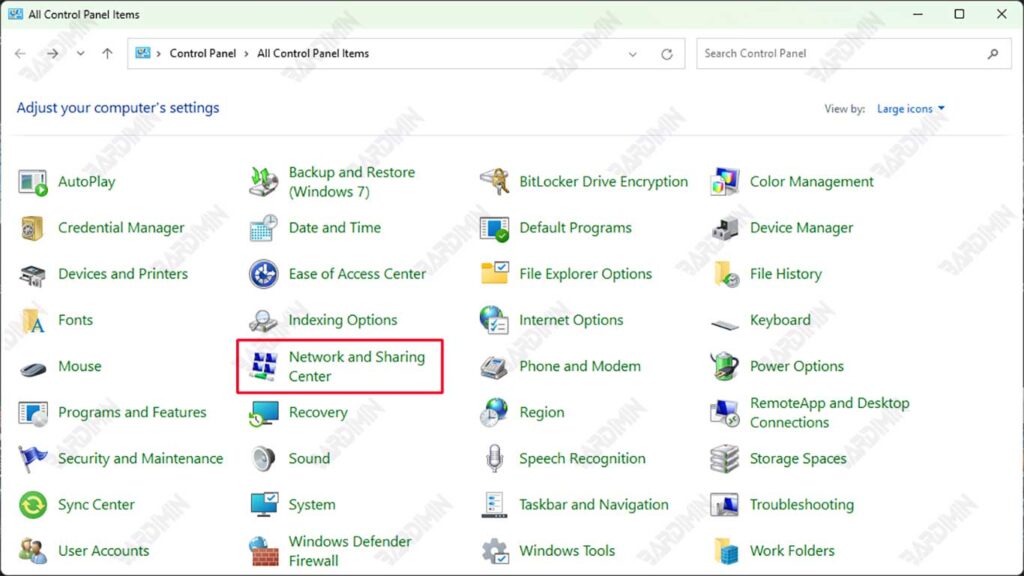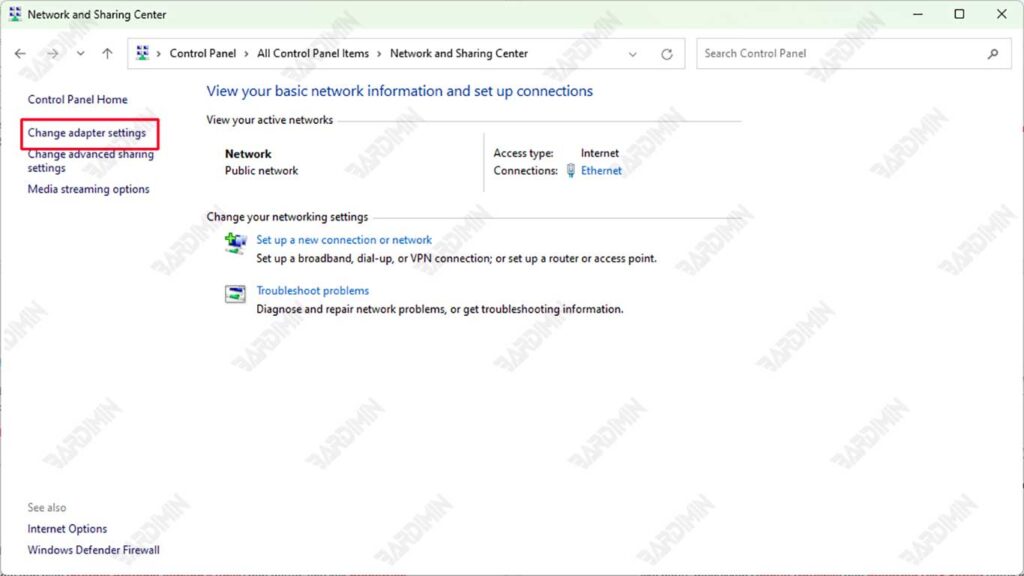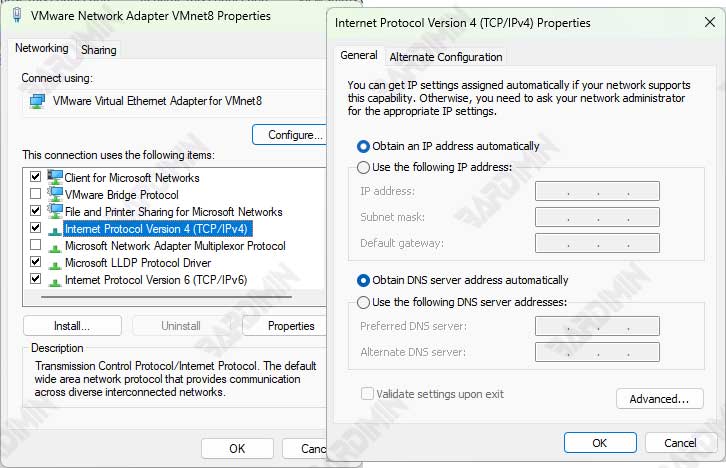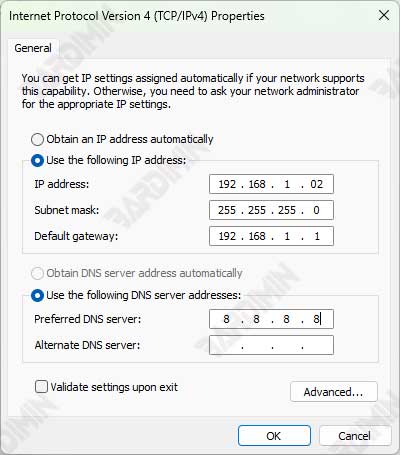How to Enable DHCP on Windows
Enabling DHCP for IPv4 and IPv6 in Windows is essential for the network to function properly without IP address issues. Here are the steps to enable DHCP on your Windows device.
1. Access Network and Sharing Center
The first step is to open the Network and Sharing Center, where you can set up your network settings:
- Open the Control Panel in Windows, then select Network and Sharing Center.
- You can also sign in through Settings in Windows and select Network & Internet.

2. Change Adapter Settings
Once you’re in Network and Sharing Center, follow these steps to change your network adapter settings:
- Click Change Adapter Settings on the left side of the window.
- Select an active network adapter (such as Wi-Fi or Ethernet), then right-click on the adapter and select Properties.

3. Setting IPv4 for DHCP
To enable DHCP on IPv4, follow these steps:
- Find and select Internet Protocol Version 4 (IPv4) from the list, and then click Properties.
- On the General tab, select the Obtain an IP address automatically option. With this option, your device will automatically get an IP address from the DHCP server.
- Click OK to save the changes, and you’ll be taken back to the Properties adapter window.

4. Setting up IPv6 for DHCP
Next, you can enable DHCP on IPv6 if your network supports it:
- In the Properties adapter window, search for Internet Protocol Version 6 (IPv6) and click Properties.
- On the General tab, select the Obtain an IPv6 address automatically option. This allows the device to obtain an IPv6 address automatically.
- Click OK, then Close to close the adapter settings.
When DHCP Doesn’t Work
Sometimes, even though DHCP is already enabled, there are times when we need to provide an IP address manually. This usually happens when the DHCP server can’t provide an IP address automatically or certain devices don’t support DHCP.
Situations Where Manual Assignment Is Required
- Devices That Don’t Support DHCP: Some older devices, such as older printers or older networking devices, may not be able to use DHCP. In this case, the IP address must be manually set for the device to connect to the network.
- Problems with DHCP Server: Sometimes, DHCP servers experience problems or are inactive on the network, so the device cannot get an IP address automatically. Manual assignments are the solution to maintaining the connection maintained.
Steps to Manually Assign an IP Address
If you need to set up an IP address manually, follow these steps:

1. Access Adapter Settings
- Open Network and Sharing Center as previously explained.
- Click Change Adapter Settings, select an active network adapter (such as Wi-Fi or Ethernet), right-click, and select Properties.
2. Changing IP Address Settings
- Select Internet Protocol Version 4 (IPv4) or Internet Protocol Version 6 (IPv6) according to the network you are using, and then click Properties.
- Uncheck the Obtain an IP address automatically option to disable DHCP on your device.
- Enter the desired IP address and subnet mask. To avoid conflicts, make sure this IP address is unique on your network.
3. Additional Settings (Optional)
- If necessary, enter Default Gateway and Preferred DNS Server for a more stable network connection.
- Click OK to save the changes, and the adapter will use the manual IP address you have set.
Conclusion
Correct DHCP settings aare essential for maintaining a stable and efficient network connection. By enabling DHCP, devices can automatically obtain IP addresses, prevent address conflicts, and make network management easier, especially on networks with multiple devices. DHCP also reduces manual errors in IP address assignment, thus reducing the likelihood of connection issues.
However, to maintain optimal network performance, it is highly recommended to perform regular maintenance on the network system. This includes checking the DHCP server, updating the software, and checking the configuration of network devices. This maintenance will help prevent future connection issues and ensure that the network remains running properly and reliably.

